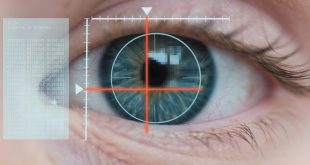 While all glasses lenses are designed to get you as close to 20/20 vision as possible, determining the ultimate lens type for you requires a combination of factors: visual acuity, eye health and condition, and your lifestyle habits and goals. All three must be combined to determine the best possible lens for how you live.
While all glasses lenses are designed to get you as close to 20/20 vision as possible, determining the ultimate lens type for you requires a combination of factors: visual acuity, eye health and condition, and your lifestyle habits and goals. All three must be combined to determine the best possible lens for how you live.
Everything begins with a comprehensive eye
exam, which is used to assess eye health, visual acuity and any refractive conditions. After reviewing your personal and family medical history for issues that may affect your vision and eye health, your optometrist or ophthalmologist will perform the following:
1. A Visual Acuity Test – This test uses an eye chart to measure how well you can see at various distances. Using one eye at a time, you’ll identify the letters you can see with your bare eyes. To determine each eye’s refraction, you will view the chart through a phoropter, which will provide different lens magnifications to choose from. Which is clearer, one or two?
2. A Binocular Vision Assessment – This test evaluates how well your eyes work together, and is used to diagnose dysfunction that can lead to a host of symptoms, including double vision, dizziness, nausea and headaches. Addressing any dysfunction can relieve these symptoms.
3. An Eye Health Evaluation – Your eye doctor will perform a dilated pupil exam to study the internal and external structures of your eyes to check for any signs of eye disease or abnormality. Dilation of the pupil lets extra light into your eye so your doctor can inspect the optic nerve, retina and other areas for signs of glaucoma, macular degeneration, retinal tear or detachment, cataracts, tumors and other maladies.
The results of your comprehensive eye exam will enable your eye doctor to prescribe an accurate prescription for corrective lenses. Once your prescription has been identified, your eye doctor will move on to the next step: working with you to decide which of the various lens types best fits your specific visual challenges, everyday demands, and things like sports, hobbies or long hours in front of a computer.
TYPE OF LENS OPTIONS
. Single Vision Lenses – These lenses are the most common type, and are designed to correct vision at a single distance, whether far away (driving), an intermediate distance (watching TV), or up close (reading, crafting, computer work).
. Multifocal Lenses – When multiple fields of vision correction are needed, multifocal lenses come in a variety of choices based on your vision and needs:
a) Bifocal Lenses: Bifocals provide two distinct corrections, one for distance and another for near vision. Bifocals are ideal for individuals who have difficulty seeing at both far and near distances.
b) Trifocal Lenses: Trifocals have three vision corrections built into the lens to sharpen distant, intermediate and close-up vision.
c) Progressive Lenses: Also known as no-line bifocals, progressive lenses offer a seamless transition from distant to intermediate to close-up vision without visible lines. They most closely mimic naturally sharp vision.
PROTECTIVE COATINGS TO SUIT YOUR LIFESTYLE
. Polycarbonate/High Index Lenses – If you have a high prescription but don’t want thick, heavy lenses weighing on your nose or distorting your appearance, thinner, lighter polycarbonate lenses can provide strong correction of nearsightedness, farsightedness and astigmatism, without the bulk or “bug-eyed” effect.
. Polarized Lenses – Polarized lenses are specially treated to filter out glare, reducing the eye strain caused by overly bright or harsh lighting sources like fluorescents and reflective environments like water, snow, etc. For optimal outdoor protection, look for polarized lenses bearing the UV protection label.
. Photochromic Lenses – Light-adaptive, aka “transition” lenses, can alleviate the burden and hassle of switching back and forth from indoor glasses to sunglasses. If you’re someone who is in and out of the sun all day, photochromic lenses are designed to adapt to each lighting environment, creating greater ease and convenience.
. Specialty Lenses – These may include occupational lenses for specific tasks, such as blue light filtering for extended computer work, or impact-resistant lenses for sports.
. Functional Coatings – Anti-reflective coating can help improve your lenses by making them resistant to glare, light haloing, and other vision-altering reflections. As another benefit, this coating will make your lenses look clear and nearly invisible, so other people can focus on your eyes, not your glasses. High index lenses are especially prone to bouncing light, so anti-reflective coating can really improve their function. Scratch resistant coating offers protection from everyday wear and tear.
UV coating protects the eyes from the sun’s
harmful rays.
FIND THE BEST LENSES FOR YOU AT LAKE EYE
Whether you’re getting glasses for the first time, or updating your prescription, talk to your eye doctor about your visual challenges, lifestyle requirements and recreational pursuits. Together, you can determine the best lens type to promote the optimal experience at work, rest and play. It all begins with a comprehensive eye exam or new visual acuity exam at Lake Eye (a US Eye Company). Each Lake Eye location features talented, caring eye doctors and a dazzling array of the latest designer fashion frames, top-quality lenses and contact lenses to clarify and enlighten everything you do.
Lake Eye Associates
352-632-2020
 Central Florida Health and Wellness Magazine Health and Wellness Articles of the Villages
Central Florida Health and Wellness Magazine Health and Wellness Articles of the Villages



